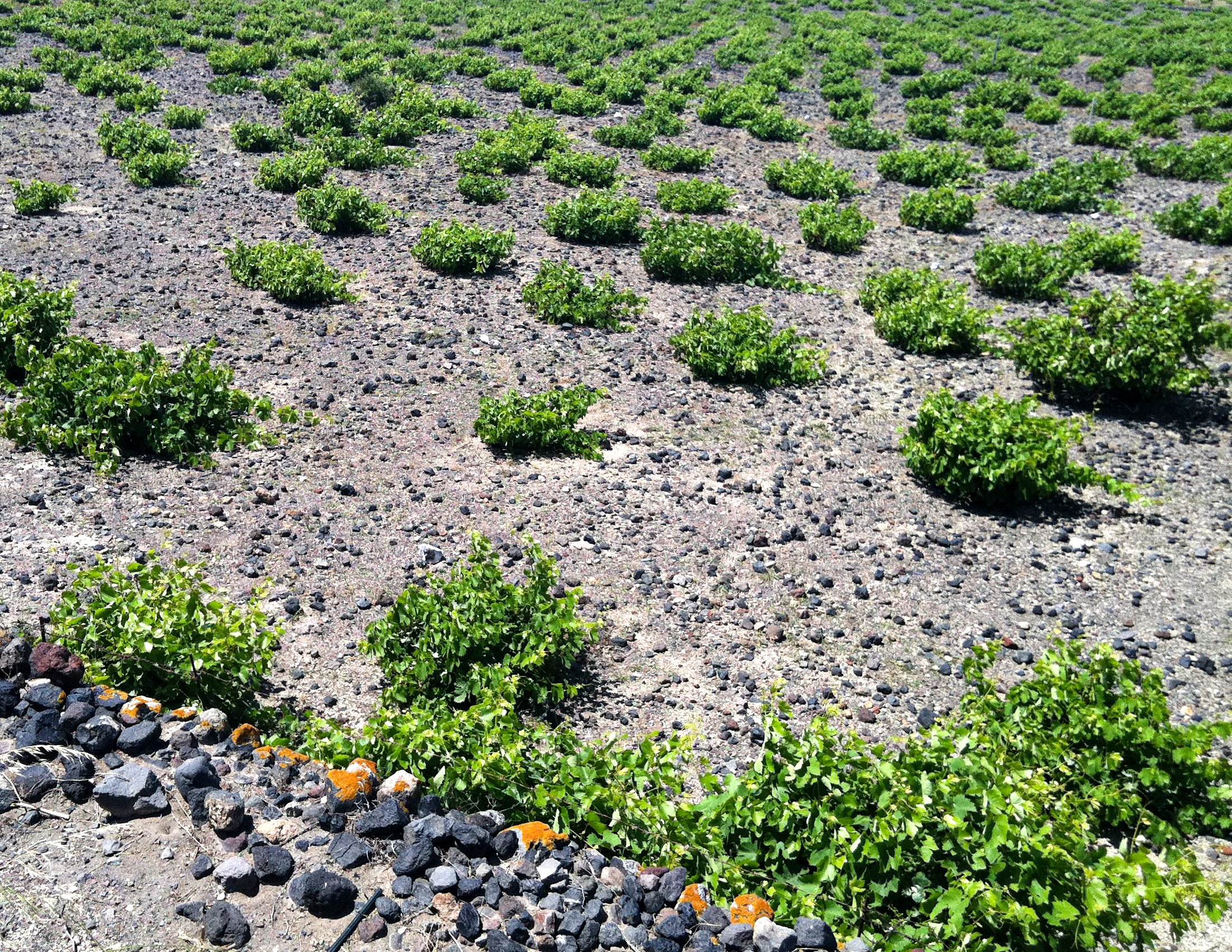
A museum-vineyard / canvas for generations
The vineyards of Santorini have been cultivated without interruption since ancient times and continue to produce high quality wines. They can be described as historic, world heritage vineyards.
-

Soil
The volcanic soil of Santorini, which gives the unique character and high quality to the wine, is one main reason why this vineyard carries the importance of a Museum.
It is one of the oldest vineyards, about three thousand years old. After the great volcanic eruption around 1620 BC, which changed the shape of the island, almost the entire area of the island was covered by volcanic tephra with a thickness that reaches 40 meters. Life disappeared. This tephra later became the new farmland of Santorini. With the repopulation of the island around 1200 BC the vine appears again as the main crop of the island, together with figs and barley (according to archaeological research, before the volcanic eruption there was a vineyard and wine was produced).
The soil is a mixture of volcanic ash and pumice. Throughout the entire length of the island, both small and large rocks composed of magnesium and ferrous iron are encountered, as well as small and large tephra deposits, all of which are of volcanic origin. The pumice (consisting of small to very small porous stones) extends from the surface, to considerable depths. -

Pruning
The pruning technique is both ancient and unique. One type is called the “giristi”. It is applied in the places that are most exposed to the wind. With this pruning type the grapes are also protected against the heavy sunshine in the summer months, being covered by this leafy “canopy”. The vines that that are pruned in this style, resemble a stork's nest.
The special soil of Santorini protected the vineyard from phylloxera. It is a rare vineyard that since ancient times has been renewed with stolons (runners), resulting in vines whose age often exceeds 100 years. We could argue that this is a vineyard with no date of birth.
-

Varieties
An almost 3000-year-old vineyard like that of Santorini has many varieties -over 50 have been counted, many of which are indigenous. Assyrtiko, the most important indigenous variety, covers 70% of the vineyards on the island. In recent years, due to its high quality, it has been planted in many vineyards across Greece and beyond. Another great variety is Mavrotragano (red), also native to the vineyard, which is also now planted beyond Santorini.
-

Climate
The climate is best described as Mediterranean, with mild winters and cool summers (due to the strong northerly winds). The vines are also relieved from the heat because of the sea breeze. Average annual rainfalls range up to 350 mm, and the average temperature is 16.5°C.
During summer, humidity which is especially created in the caldera, falls like gentle rain on the surface of the soil and vines. This ‘‘rain’’ known by the locals as ‘‘pousi’’ (meaning a mist rising from the sea) soothes the vines from the high temperatures during the day. The chill which descends on the island during the summer nights -largely as a result of the great temperature differences between day and night- attributes to the high quality of the wine produced in Santorini.
-

Special vineyard characteristics
Santorini is part of the island complex of Cyclades, located in the South Aegean. It has a surface area of 73 sq. km and is located at a geographical latitude between 36o 19’ 56’’ and 36o 28’ 40’’ N. and a geographical longitude between 25o 19’ 22’’ and 25o 29’ 13’’ E. The viticultural region of the island has a size of approximately 1,400 hectares, starting at sea level and ascending in terraces up to the caldera, which has a height of 150 to 250 meters from sea level depending on the location.
The combination of ferromagnesian rocks and pumice is what forms the characteristic and unique volcanic soil of Santorini. Pumice stones keep the moisture in the soil, alleviating the stress during summer. The large and small ferromagnesian rocks give a special mineral character to the wines of Santorini.

